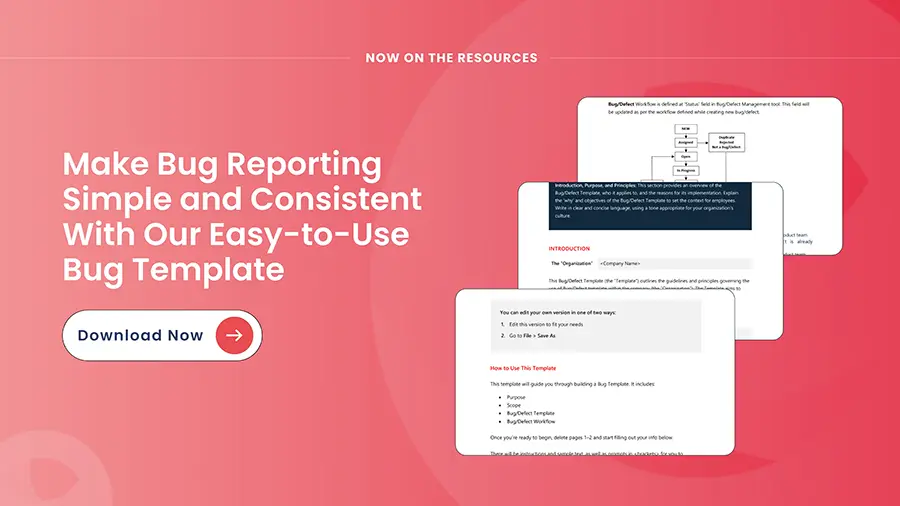Modern software development is complex and evolving. Software development teams have spent good amount of time in developing and building test automation capabilities to speed up releases and build high quality products. But even the best teams have their own set of test automation challenges.
From what we have learnt in our interactions with clients, lack of technical skills and more manual resources inhibit development teams to realize their testing goals. Traditional test automation methods can leave gaps in coverage, making it difficult to ensure that your software is working as expected.
Behavior-Driven Development (BDD) is a methodology that addresses these gaps by shifting the focus from testing the implementation to testing the behavior of the system. By expressing the expected behavior in a natural language format, BDD helps teams to better understand and validate the requirements, resulting in more comprehensive test coverage. In this article, we’ll explore how BDD can help you overcome the limitations of traditional test automation and build better software.
How BDD and Test Automation are related?
For producing high-quality digital products, testing must be democratized across the organization.
Often, Test Automation is considered as the holy grail of the software development initiatives. But even with test automation, testers need to write codes, maintain testing scripts frequently due to UI changes, and take care of pre-production environments. This makes testing slow, flaky, and limited to technical roles.
BDD helps in overcoming these challenges and giving opportunity to business users and non-technical stakeholders to contribute towards the quality engineering initiatives. At Enhops, we often tell our clients to start focusing and scaling their initiatives towards making quality engineering an organization wide responsibility. BDD is the way to achieve this.
BDD and test automation are two different concepts that strives towards improving the quality and reliability of digital products. As they try to achieve the same outcomes in different ways, teams often get swamped by number of tools, technologies, best practices, and implementation methodologies.
To achieve the best of both the worlds, BDD and Test Automation must be paired and implemented successfully. Also, your quality engineers or SDETs (Software Development Engineers in Testing) must be trained to understand BDD concepts and adopt the BDD languages like Gherkin.
BDD can help in collecting requirements in easy and understandable format and simplify the testing process. This also helps in justifying testing objectives, ROI, and buying in leadership decision for more quality investments. Here are few ways how BDD simplifies testing and gives more mileage to test automation practices –
- Writing User Stories in easy to understandable format – BDD promotes the idea of using natural language to write user stories removing all ambiguous requirements. Usually, BDD fosters standard template to write user stories. The standard BDD template includes defining the user role, want he/she wants to achieve, and the ultimate benefit. For example: “As a customer (User role), I want to be able to search for books by keyword (goal), so that I can quickly (benefit) find the books I am looking for.
- BDD Scenarios – In BDD, user stories are further broken down into scenarios to make it easy for testers and development team to understand how a specific feature should perform under different circumstances. Few examples below –
As a customer, I want to be able to search for books by keyword, so that I can quickly find the books I’m looking for.
As a customer, I want to be able to view book details, including the title, author, and cover image, so that I can make informed purchasing decisions.
As a customer, I want to be able to add books to my cart and proceed to check out, so that I can purchase the books I want.
- Gherkin Syntax – Gherkin syntax is used to write user stories in plain natural language so that it’s easy for technical and non-technical users to understand various user stories.
Feature: Search for books
Scenario: User can search for books by keyword
Given the user is on the homepage
When they enter “Harry Potter” into the search bar
And they click the search button
Then they should see a list of books related to “Harry Potter”
And the page tit|
How BDD can change test automation practice
BDD (Behavior Driven Development) is becoming increasingly popular because of the collaboration and communication opportunities provided over traditional software development methodologies. BDD emphasizes on building extremely tight collaboration between developers, testers, and stakeholders and provides user scenarios for common understanding. This leads to high quality software that meets customer needs and reduces misunderstanding in test development stages. This also ensure faster feedback loops which reduces the reaction time.
BDD also enables creation of clear and comprehensive tests that leads to more accurate automated tests. This leads to better tests, increase test coverage, and increase in overall quality of the software.
How does BDD and Test Automation look when put into practice
BDD and Test Automation complements each other perfectly. The first concept simplifies the testing process by writing user stories and scenarios in easy-to-understand format. The latter helps in automating tests by executing them in a continuous fashion.
- Collaboration: BDD enhances collaboration between developers, testers, product owners, decision makers, and even customers to define the application behavior in plain language format. Using Gherkin language, product owners and customer facing employees can write user stories from the user’s perspective and can further break them down into specific scenarios.
- Automating Test Cases: Post writing user stories and scenarios, these scenarios are developed into automated tests. Following the simple language format removes the ambiguity and helps in developing right tests. These test cases are automated using tools like Cucumber, JBehave, or SpecFlow.
- Continuous Integration: These automated tests can be integrated into regular continuous integration (CI) pipeline that allows developers to automatically run tests whenever new code changes are pushed to the repository. This ensures that the applications are continuously tested using behavior driven development described in Gherkin language.
- Test Results: The automated test results are monitored to ensure that they consistently pass and meet the desired application behavior. If the test fails, necessary changes are done to the code and the test.
- Continuous Improvement: Once implemented, BDD and test automation need to be refined and iterated to address changing application and business requirements. Continuous improvement and iteration help in ensuring that your teams stay ahead of the curve and continuous to meet expectations of users.
For instance, consider an eCommerce website that sells books. The following are examples of user stories and scenarios in BDD combined with test automation format:
These user stories are then written in automated tests using languages like Ruby or Java. They are then integrated into the CI pipeline to run automatic tests whenever code changes are pushed to the repository. The results are monitored and improved continuously to achieve the desired behavior.
Feature: Search for books
Scenario: User can search for books by keyword
Given the user is on the homepage
When they enter “Harry Potter” into the search bar
And they click the search button
Then they should see a list of books related to “Harry Potter”
And the page title |
Feature: View book details
Scenario: User can view book details
Given the user is on the homepage
When they click on a book
Then they should s|
BDD and Test Automation – A Powerful Combination
To summarize, Behavior Driven Development and Test Automation are clearly transforming the way organizations are delivering high-quality digital applications. BDD helps in democratizing the quality across the organization through its focus on collaboration while ensuring that users experience are given the utmost importance. When BDD and Test Automation are combined, it revolutionizes the quality function by providing more accurate method for testing software.
In recent years, BDD and Test Automation have become very popular amongst Agile and DevOps teams. Organizations adopting these techniques are continuously seeing uptick in overall quality of their products, better collaboration between teams, increase in employee productivity, and higher levels of user satisfaction. If you are looking to transform quality engineering process, it’s the time to consider BDD and Test Automation. Enhops works with multiple clients to improve their testing and quality assurance services. We combine BDD and test automation to improve the software development process and increase the quality of applications while keeping a tight check on costs.
Looking to start your BDD journey, write to us – info@enhops.com




